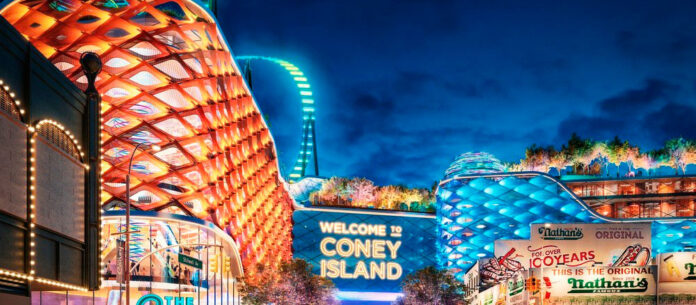Ellen Geller Kamaras
The recent and decisive rejection of the Coney Island casino project last month marked a significant victory for local opposition groups and a critical turning point in the high-stakes competition for New York’s three downstate gaming licenses. This event, which effectively eliminated the sole Brooklyn bid from the race, highlighted the binding power of the newly formed Community Advisory Committees (CACs) and the influence of grassroots advocacy in New York’s casino siting process.
The Coney Island proposal, “The Coney,” was voted down 4-2 by its six-member CAC. This result was not unexpected, as a majority of the committee’s members, including the three elected officials representing the district, had publicly signaled their intent to oppose the project in the days leading up to the vote. The four members who cast the No votes were Brooklyn Borough President Antonio Reynoso, State Senator Jessica Scarcella-Spanton, Councilman and CAC Chair Justin Brannan, and Assembly Member Alec Brook-Krasny’s appointee, Marissa Solomon. The only two votes in favor of the project came from the appointees of Mayor Eric Adams and Governor Kathy Hochul, a trend that was consistent across all projects ultimately rejected by the CACs.
Victory for Community Advocates
The defeat of the Coney project was largely the culmination of years of dedicated work by community advocates. Chief among these was the Sephardic Community Federation,
which led an intense opposition campaign over the past five years, accelerating efforts over the last ten months. Under the leadership of Sam Sutton and Ronnie Tawil, the SCF successfully mobilized its constituency by framing the casino as a threat to community values and neighborhood stability. Their core argument was that a massive, easily accessible casino would be “way too close for comfort,” presenting a “highly addictive” and destructive temptation, particularly for teenagers, which they stressed was inconsistent with Torah values. The SCF viewed the CAC’s rejection as a major step in protecting their community’s moral character and preserving the integrity of their neighborhoods against commercial overdevelopment.
Proponents’ Claims Declined
Proponents of the project, led by developers like Thor Equities, argued that The Coney would be a transformative economic engine, promising thousands of new jobs, revitalization, and year-round tourism for the iconic but seasonal amusement district. The developers even attempted a last-minute push to win over opposition, reportedly increasing the proposed community trust fund and public safety grants to hundreds of millions of dollars. However, opponents countered that the benefits would primarily flow to investors, while the community would bear the costs of increased traffic, crime, and a fundamental shift in the character of “The People’s Playground.” Councilman Brannan articulated the sentiment of the opposition, stating that community members were “overwhelmingly” against it, making his decision to vote no a necessity as a local leader.
The Coney Island proposal was the final project to be voted upon by a CAC before the September 30 deadline. Its rejection brought the total number of defeated bids to four, as all three initial Manhattan proposals – Caesars Palace Times Square, The Avenir at Hudson Yards, and Freedom Plaza near the United Nations – were voted down earlier in the month, underscoring the formidable hurdle that CAC approval proved to be for the applicants.
Four Projects Still Vying for Three Licenses
This left four projects that successfully secured the required two-thirds vote to advance to the next stage. MGM Empire City in Yonkers and Resorts World New York City at Aqueduct Racetrack in Queens, both already operating as “racinos” (facilities with video lottery terminals), were approved unanimously on September 23, leveraging their existing infrastructure and community relationships. On September 29, just hours before the Coney vote, Bally’s Bronx, proposed for the site of the former Trump Golf Links, secured its approval with a 5-1 vote. The final winner of the CAC round was Metropolitan Park at
Willets Point, Queens, an ambitious, $8 billion project adjacent to Citi Field, which received a unanimous 6-0 vote on September 30.
These four remaining contenders – MGM Empire City, Resorts World New York City, Bally’s Bronx, and Metropolitan Park – will now compete for up to three of the final licenses. The process moves to the NYS Gaming Facility Location Board (GFLB), which will conduct the final evaluation based on criteria such as economic impact, community benefits, and speed to market. The GFLB is scheduled to announce its recommendations by December 1, 2025, with the New York State Gaming Commission expected to officially award the licenses, each requiring a $500 million fee from the winners, by December 31, 2025. The defeat of The Coney has effectively created a four-way race for three licenses, setting the stage for a final high-stakes decision that will shape New York’s gaming landscape for decades.



